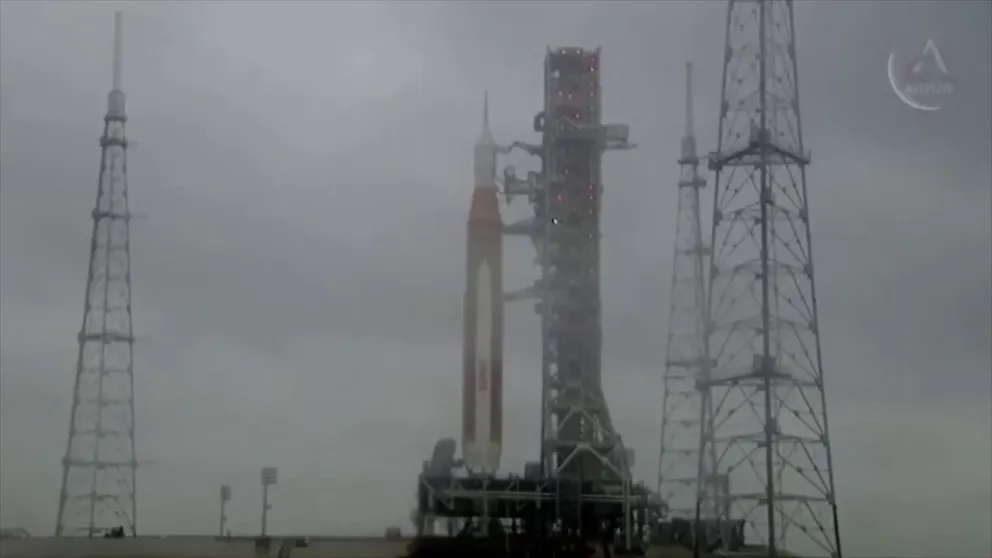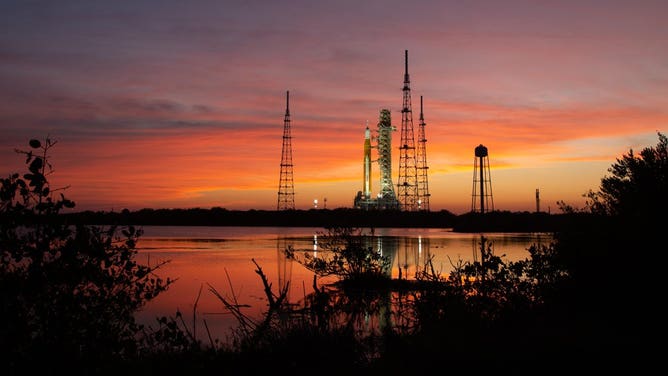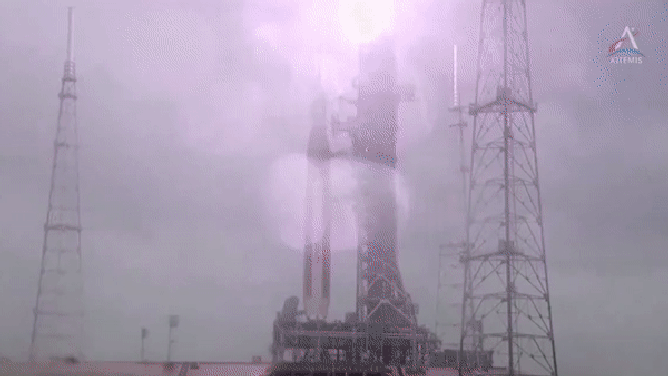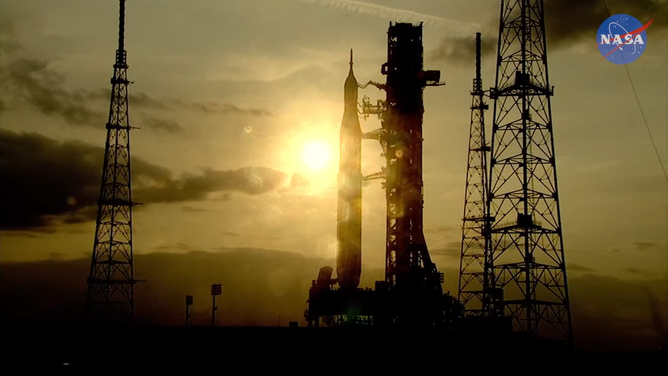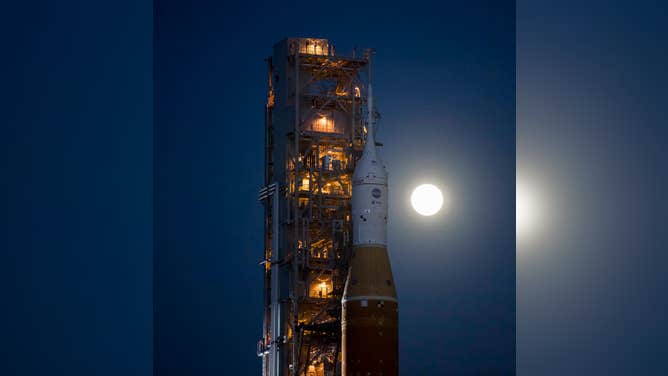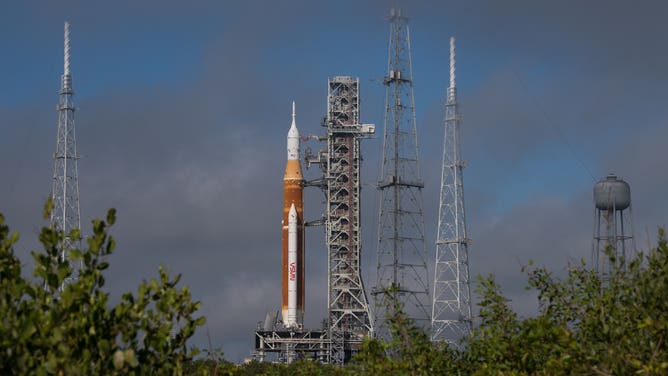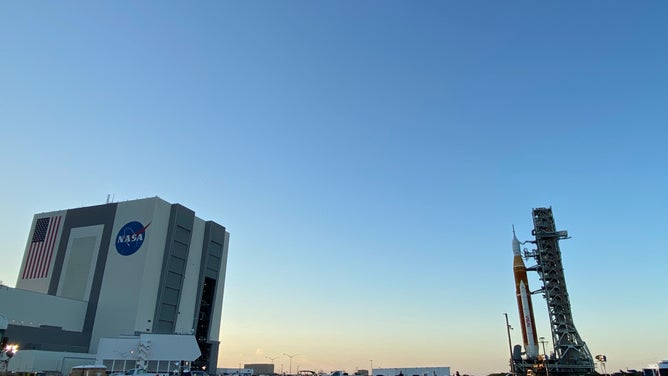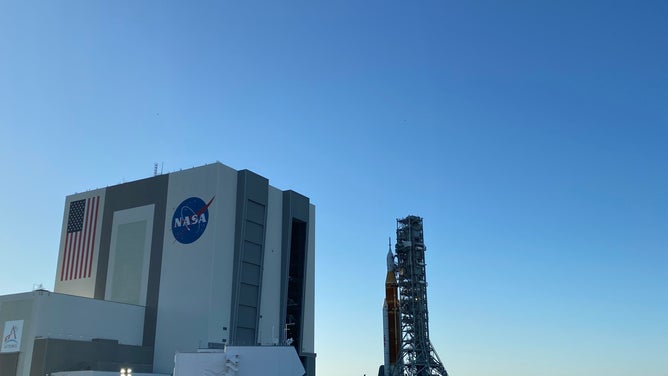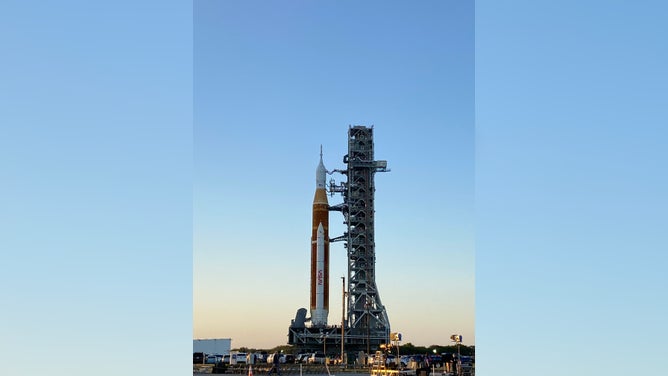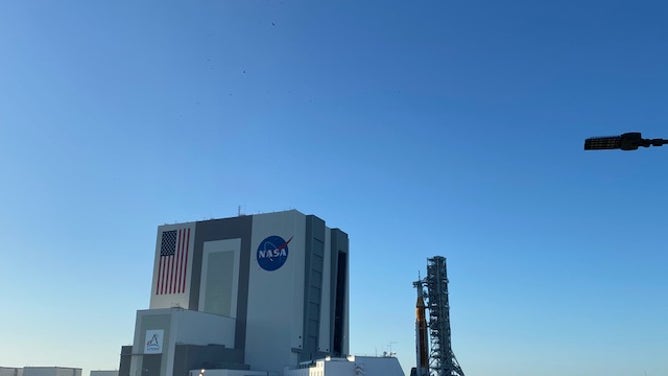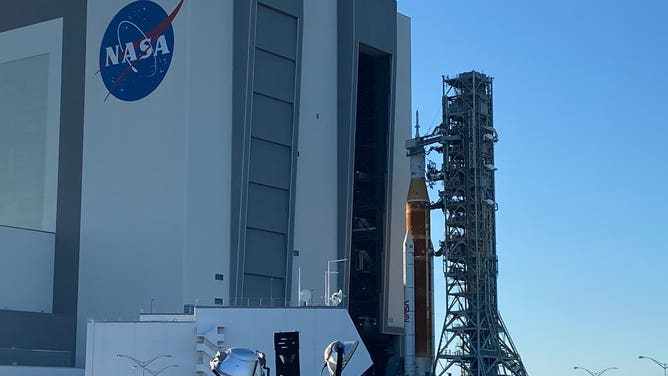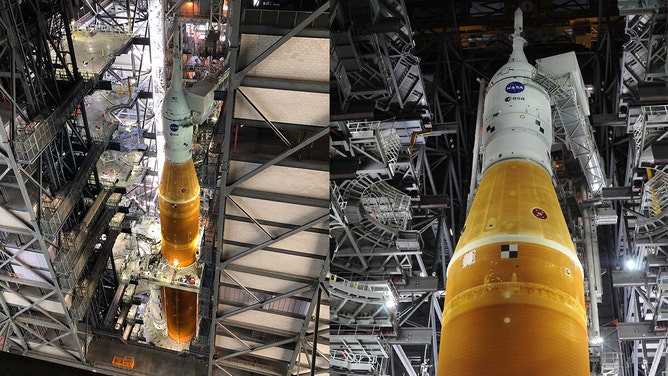Dress rehearsal for moon rocket underway at Kennedy Space Center
Due to a valve issue, SLS upper stage won't get filled with cryogenic fuel during this test
Lightning strikes NASA launch complex
Lightning struck the area around the Artemis I wet dress rehearsal on Saturday
CAPE CANAVERAL, Fla. – NASA will again try to complete a massive dress rehearsal for its moon rocket after several previous attempts were called off due to technical issues and safety concerns.
Wet dress rehearsal test activities began on Tuesday with workers returning to their command stations and is expected to conclude after crucial tanking operations on Thursday.
Original plans called for loading more than 700,000 gallons of propellants into the rocket, but NASA says the dress rehearsal will be modified due to an issue with a 3-inch helium valve that halted operations during previous attempts.
The point of the wet dress rehearsal test is to run through the countdown, fully testing the capabilities of the Space Launch System rocket and allowing the launch team to work out any kinks before the real launch.
WATCH LIGHTNING STRIKE NEAR A MASSIVE SPACE ROCKET IN FLORIDA
The agency said a helium valve, which protects the gas from flowing in the wrong direction, isn’t functioning properly. Helium is used to clear pipes before loading propellants, as well as draining the fuel after the tests have concluded.
As a result of the valve issue, NASA managers said Monday the SLS upper stage will not be loaded with cryogenic fuel and some of the commands involving the Interim Cryogenic Propulsion State (ICPS) won't be completed to avoid the issue with the helium valve. The ICPS is what provides propulsion in space for the Orion after the booster and core stage have separated.
Once the countdown rehearsal is complete the SLS rocket and the Orion spacecraft will be rolled back to the vehicle assembly building, where NASA says engineers will have time to examine the valve and determine if it needs to be replaced.
HOW TO WATCH FOX WEATHER ON TV
NASA was targeting a June test launch for the rocket, but it remains unclear how the recent delays with the dress rehearsal will impact the agency’s timeline.
Launch Director Charlie Blackwell-Thompson said the data from the test will help them decide if another complete wet dress rehearsal will be needed before the Artemis-1 launch.
When it does happen, SLS will launch the Orion spacecraft on a moon orbit. Based on the Earth-moon alignment, NASA officials said there are several launch windows available in mid-June, early July and later in the summer.
The first Artemis mission will launch the SLS rocket and Orion spacecraft from the space center without a crew.
If the program is successful, astronauts could be given the green light to return to the moon by 2025 and Mars by 2040 on future Artemis missions.
